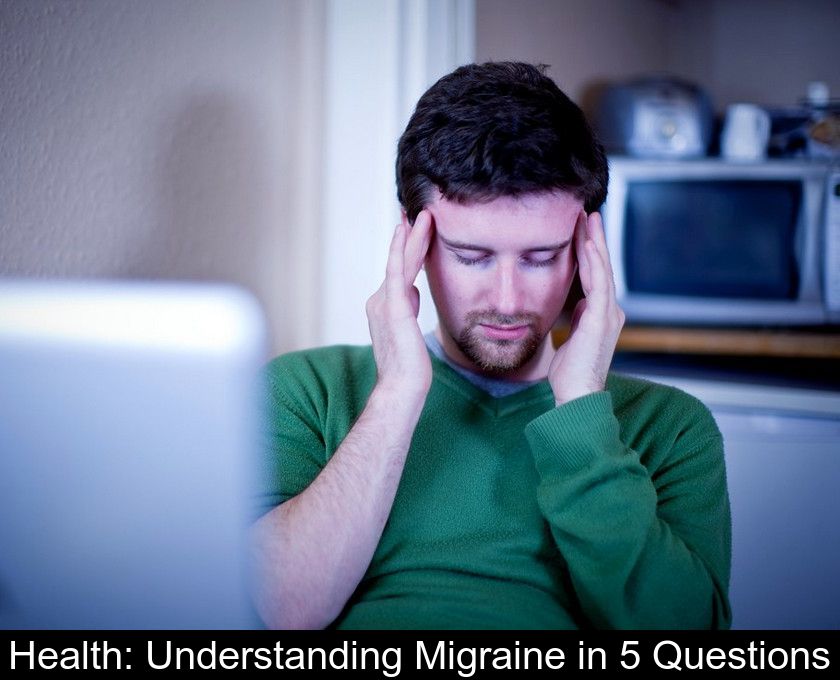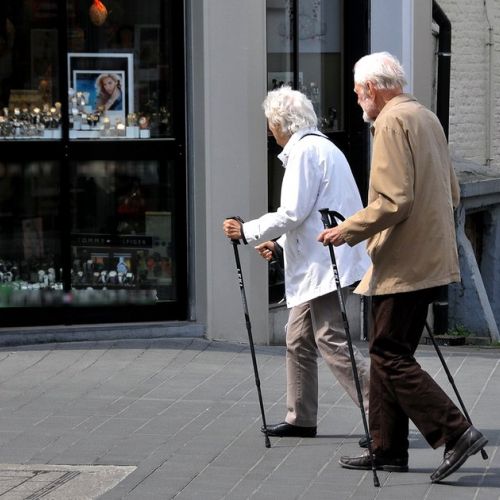Health: Understanding Migraine In 5 Questions
Everyone has suffered from headaches at one point or another. Migraine, too often underestimated, is a multifaceted and much more debilitating disease. It requires an accurate diagnosis and appropriate treatment. It is estimated that 10% of the French population suffers from migraine attacks. We will explain what these attacks consist of and how to prevent and treat them.
What is a migraine?
Migraine is a chronic and disabling headache. This pain, more intense than a simple headache, predominantly affects women.
The pain that affects half of the skull is debilitating, pulsatile (it beats in rhythm with the heart) and worsened by physical exertion. It is accompanied by at least two of the following symptoms: photophobia (intolerance to light), phonophobia (intolerance to noise), nausea, and vomiting.
Migraine disease most often begins between the ages of 10 and 40. In migraine sufferers, there is a family history in 70% of cases.
What are the causes of migraines?
The causes of the disease are not fully understood, even though vascular abnormalities could be at the root of the pain. Vasodilation (increase in the diameter of blood vessels) and increased vascular permeability might be involved in this disease.
Furthermore, certain neuromediators such as serotonin and norepinephrine could also play a major role in this disease. Many antimigraine medications indeed interact with the brain's serotonergic system.
What are the triggering factors for migraine attacks?
Although migraine is generally a hereditary condition, it is associated with many environmental factors that trigger attacks. These triggers include individual factors (worries, annoyances, overwork leading to stress, intense physical or intellectual efforts), the menstrual cycle in women, certain weather conditions (sudden temperature changes), strong smells, bright lights, and dietary factors.
The consumption of certain foods, overly rich meals, mixing alcoholic beverages, prolonged fasting, and dehydration can trigger migraine attacks. Chocolate, monosodium glutamate, and even coffee can be food triggers.
People with migraines need to learn to identify these factors in order to avoid them. This avoidance strategy is a simple and very effective means of prevention for those whose attacks are linked to a known external factor.
What are the symptoms of a migraine?
The migraine crisis most often begins upon waking up. It is sometimes preceded by warning signs that patients are well acquainted with, which allows them to anticipate the attack.
The Pain increases over a few hours before reaching a plateau. It is most often localized on one half of the skull (alternating between left and right from one attack to another, but fixed during the same attack).
The Fatigue caused by the migraine and the intolerance to external stimuli often require the patient to lie down in the dark until the attack passes, which takes an average of 24 hours.
In affected patients, all other examinations, including the neurological exam, are perfectly normal.
How to alleviate a migraine attack?
Regardless of your symptoms, resting quietly in the dark, away from any noise and light aggression helps to prevent worsening the crisis.
Other tricks, which do not work for all patients, can significantly alleviate migraines:
- drinking a cup of Coffee (which causes vasoconstriction).
- taking a hot or cold Shower or bath.
- using relaxation techniques or sophrology.
- applying a cold pack to the head.
The Medications commonly prescribed are acetaminophen, nonsteroidal anti-inflammatory drugs, aspirin, which can be combined with metoclopramide to reduce nausea.
Note: Painkillers should only be taken during an attack and never daily, otherwise there's a risk of chronic daily headache (medication-overuse headache with analgesic addiction). For treatment to be effective, it should be taken as early as possible. Very early treatment can significantly shorten and mitigate the crisis.
Additionally, a preventive treatment may be offered to reduce the frequency and intensity of migraine attacks in patients who have more than 3 attacks per month or who are greatly hindered in their daily activities.
But let everyone who suffers from this disease be reassured! Migraine is not an obstacle to talent. History has remembered many famous migraine sufferers such as Blaise Pascal, Voltaire, Alfred de Vigny, Victor Hugo, George Sand, Frédéric Chopin, Lewis Carroll, Guy de Maupassant, Sigmund Freud, and André Gide.











